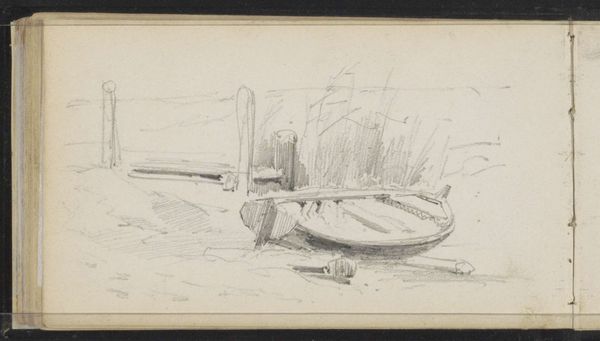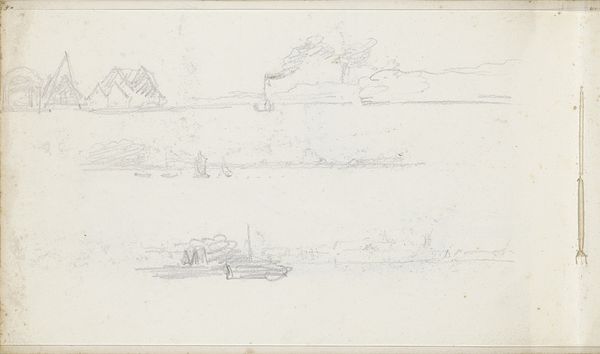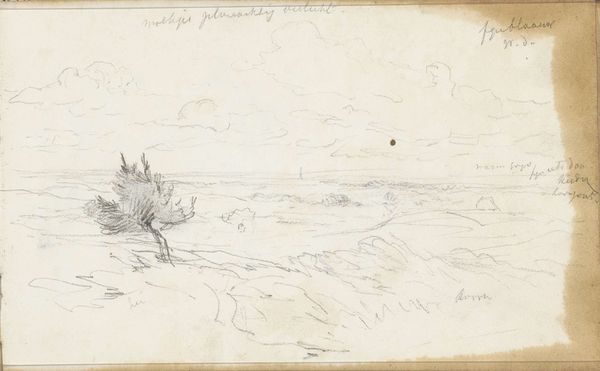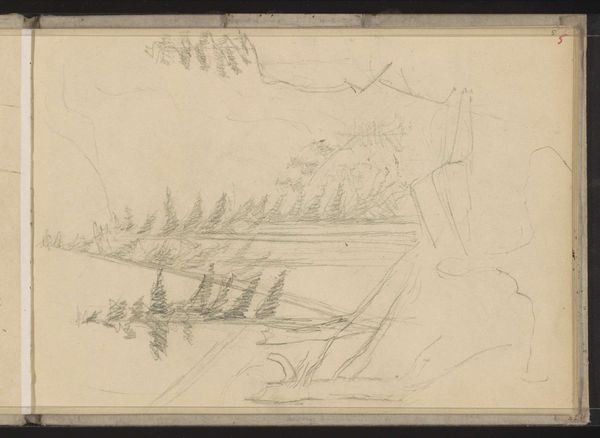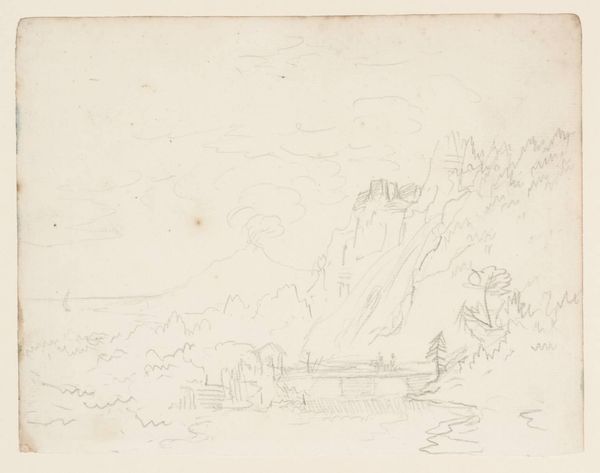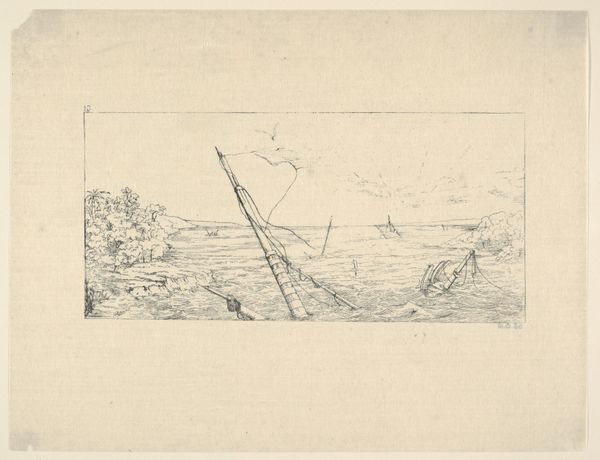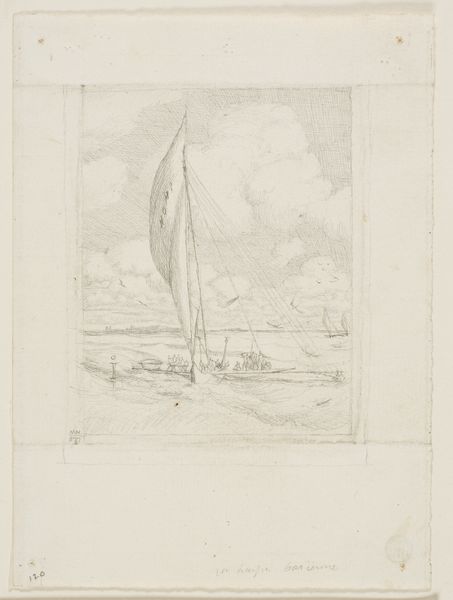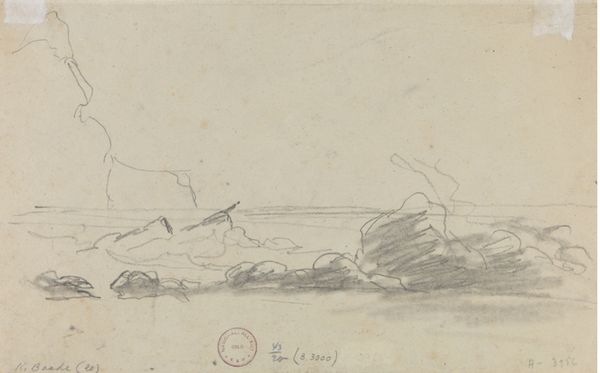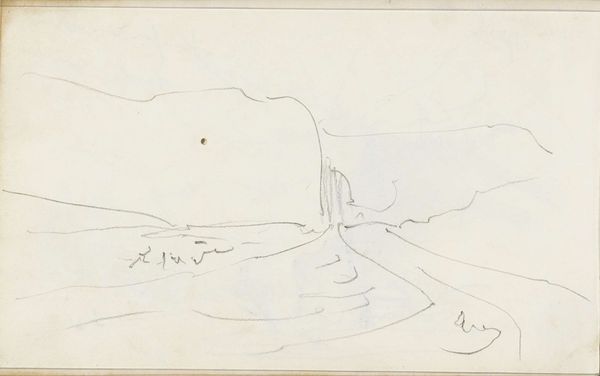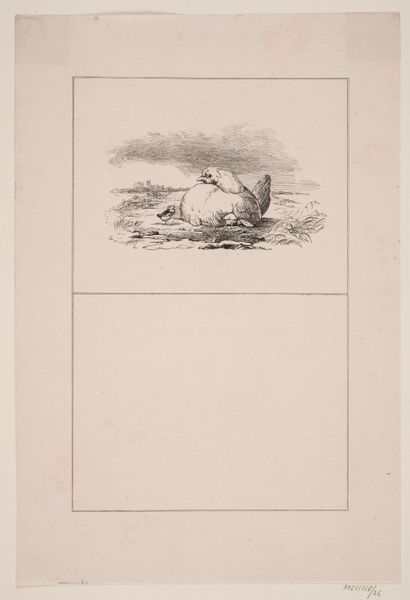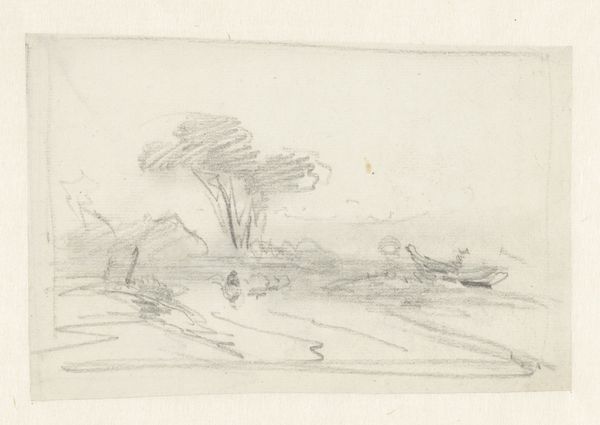
drawing, pencil
#
drawing
#
landscape
#
pencil
#
realism
Dimensions: height 448 mm, width 355 mm
Copyright: Rijks Museum: Open Domain
Curator: This is Frans Hens' drawing, "Waves crashing against two sailing boats at sea," likely created between 1866 and 1910 using pencil. Editor: It's stark, isn't it? Bleak almost. The monochrome and rough lines evoke a sense of precarity. Makes you wonder about the labour that is done at sea in such harsh conditions. Curator: Hens certainly captures the raw power of the sea, doesn't he? Looking at it through a contemporary lens, it makes me consider the narratives often erased from maritime history. Who were the sailors in those boats? What were their social and economic backgrounds? Were they there by choice, and how does labor, class, and gender shape those experiences? Editor: I'm drawn to the sketchiness of the medium. Pencil, a readily available material, emphasizes the immediacy of the artist's encounter with the scene. Was this a quick study, I wonder, for a larger work? I am also wondering if it shows any form of consumerism and social relationship surrounding the sea or the fisherman back at that time? Curator: It's compelling to consider that Hens, through his realistic depiction, indirectly presents these workers within the vastness of nature. The sea isn't merely a backdrop. It is a force, a potential antagonist. The visual weight seems to hint to that social divide: nature, humans, and that social divide. Editor: Exactly. And think of the boats themselves – constructed, maintained. The image becomes an intersection of natural forces and human ingenuity and toil. Are these pencil strokes representing the sea reflecting broader relationships of production and labor during the late 19th century? It shows all the hard work in details. Curator: Precisely. Viewing this artwork also necessitates we look beyond the romanticism sometimes associated with maritime art and interrogate the socio-political contexts influencing Hens’ representation. We might also discuss the cultural understanding and societal roles given to sea life within Hens' historical context, since a boat, then and now, seems very gendered to masculinity. Editor: Considering all this does change how one sees it at first glance. Before, it just looked like a couple of boats in stormy weather. Curator: Indeed, situating it within a matrix of identity, material, and historical production expands its meaning beyond a simple seascape. Editor: It brings more attention to how art influences social issues in its core. I find myself appreciative of its humble presentation and reflective on the labor, means, and exploitation.
Comments
No comments
Be the first to comment and join the conversation on the ultimate creative platform.
